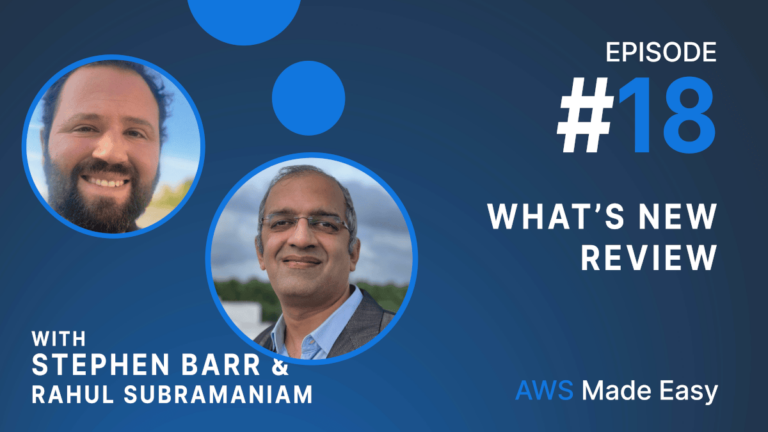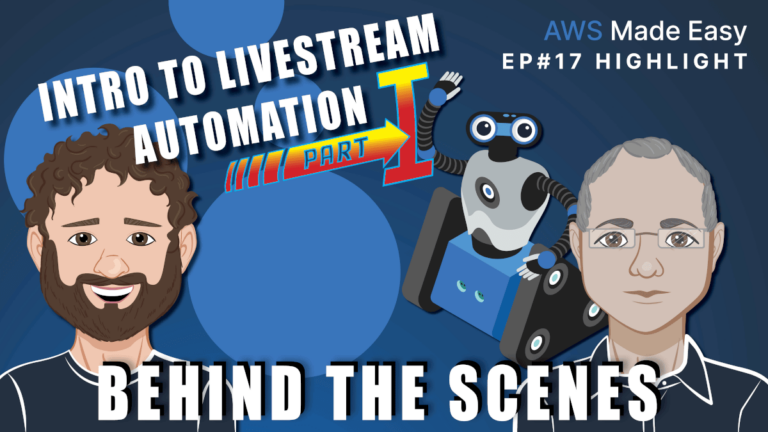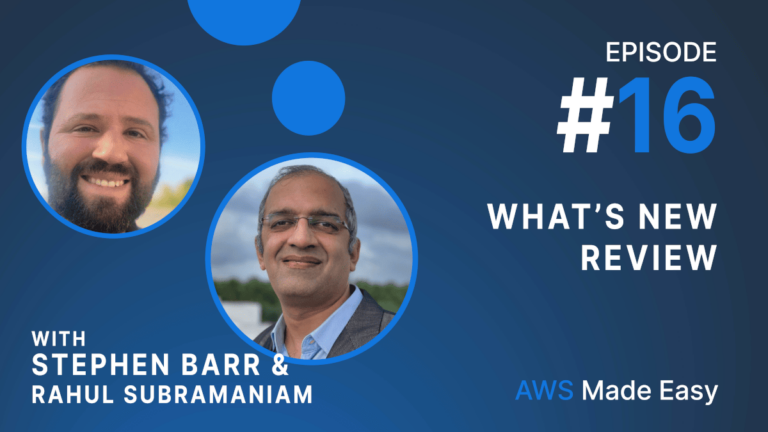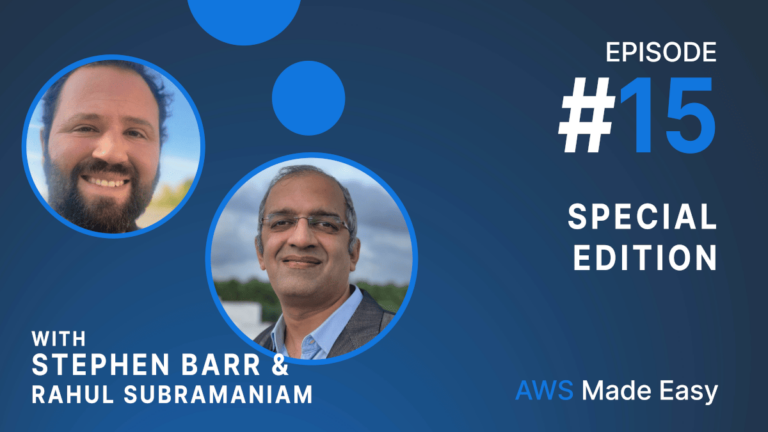Review Blogpost from Ep 17
In this segment, Rahul and Stephen review the Episode 17 “Behind the Scenes Part I” blogpost.
Rating:

Verdict:

Behind the Scenes Part 2 Coming Next Week
In this segment, Rahul and Stephen talk about the upcoming “Behind the Scenes” Part II, coming next week.
Rating:

Verdict:

sam-lambda-py-fn-graviton
In this segment, Rahul and Stephen discuss the Lambda Function URL template, which is perfect to use with DevSpaces. See https://github.com/AWSMadeEasy/sam-lambda-py-graviton for the repository, and go to https://ey-graviton.devspaces.com to try it out with DevSpaces. All you need to do is configure your DevSpace with the relevant environment variables and deploying a Lambda Function in Python complete with a Function URL, couldn’t be easier.
Rating:

Verdict:

Easily install and update the CloudWatch Agent with Quick Setup
In this Segment, Rahul and Stephen discuss the insights that can be gained by using the CloudWatch Agent. In particular, the CloudWatch agent can give you tremendous insights into how to right-size an EC2 instance.
Rating:

Verdict:

Amazon RDS Proxy now supports Amazon RDS for SQL Server
In this segment, Rahul and Stephen discuss the new support for SQL Server in RDS Proxy. This is a surprising but welcome move by AWS, which would make it faster to connect and scale with SQL Server databases.
Rating:

Verdict:

AWS Fargate increases compute and memory by 4x
In this last segment of the show, Rahul and Stephen talk about AWS Fargate. This is a very welcome improvement in the capabilities of Fargate, and it is amazing how AWS is growing the bounds of what is capable under in Serverless. They compare this to the recent auto-scaling improvements to ECS. While new features are welcome, we would much prefer to not be thinking about managing a cluster at all. Thus, we strongly prefer Fargate to ECS where possible!
Rating:

Verdict:





